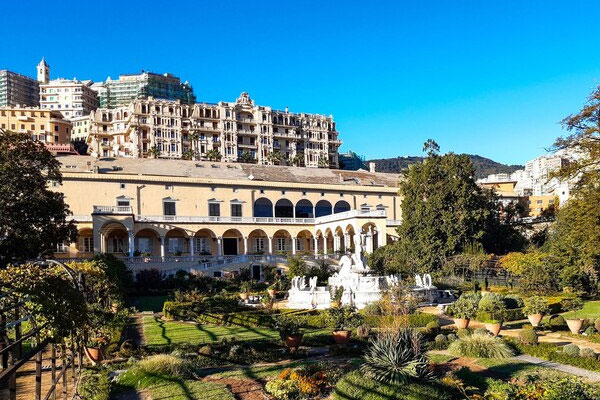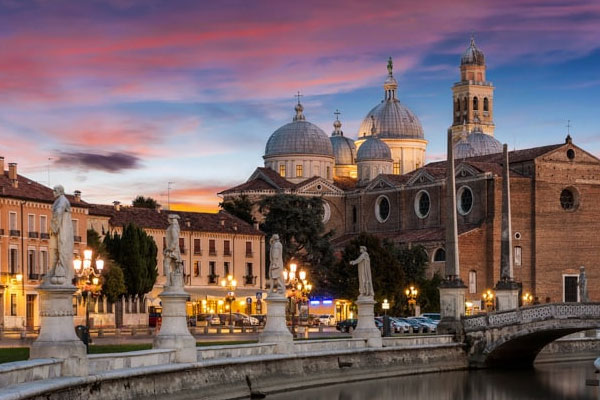Travel
Best Foods to Bring for Camping for a Week

Best Foods to Bring for Camping
Comprehensive Guide to the Best Foods to bring for Camping Adventure. Let’s take a look
Embarking on a week-long camping adventure requires meticulous planning, especially when it comes to food. The key to a successful outdoor experience lies in thoughtful consideration of the types of foods to bring. Whether it’s a one-day hike, a short-term expedition lasting 2-3 days, or an extended 5 to 10-day journey, a well-prepared food supply ensures a balanced and energizing diet.
In this guide, we’ll delve into the nuances of camp food, from understanding the differences between regular and camping food to creating a strategic meal plan and addressing specific scenarios like camping with children or opting for vegetarian options.
Understanding the Distinctions: Regular vs. Camp Food
The reality of camping dictates that preparing favorite home-cooked dishes is not feasible. The conditions of a campsite differ significantly from the comforts of a home kitchen. Therefore, the first step in planning a camping food supply involves recognizing the distinctions between regular and camp food. The limitations of cooking facilities and the necessity of carrying everything oneself underscore the importance of selecting lightweight, non-perishable, and easy-to-prepare items.
Balancing Nutrition and Weight: Creating the Right Diet
For a successful camping experience, it’s crucial to strike a balance between nutrition and weight. Considering that each person requires a daily intake of at least 600-700 grams of food (equivalent to 2500-3000 kcal), the challenge lies in choosing foods with high energy value and calorie content.
Lightweight options such as cereals (buckwheat, rice, barley, lentils), nuts, protein bars, biscuits, vacuum-packed stew, and dried or freeze-dried fruits and vegetables become essential components of the camping diet. A variety of food ensures that the body receives a full range of nutrients, vital for maintaining energy and stamina during outdoor activities.
What Not to Bring: A Cautionary Note on Unsuitable Foods
To prevent camping experiences from being marred by issues like food spoilage or excessive weight, it’s imperative to be discerning about food choices. Foods with low-calorie content and those difficult for the digestive system to process should be avoided.
Fresh fruits with a high water content and various juices, prone to quick spoilage, are best left behind. It’s crucial to discard perishable foods and avoid heavy containers, particularly glass, which poses a risk of breakage and potential injury.
The Logic of Food Selection: Making Weight-Efficient Choices
Efficiently selecting foods for a camping trip involves adhering to a logical approach. Opting for canned fish, canned beans, and a variety of cereals ensures versatility in meal preparation. Canned fish, for example, can be used for sandwiches, salads, and soups, while canned beans offer a protein-rich alternative.
Balancing the menu with different types of cereals, including rice, bulgur, and couscous, contributes to a well-rounded diet. Additionally, considering the weight of provisions becomes paramount, urging campers to take only the most necessary items to avoid unnecessary burdens.
Strategic Planning for Different Durations: A Day, 2-3 Days, 5 Days, and 10 Days
Understanding the duration of the camping adventure is essential for effective food planning. For a one-day hike, ready-made, transportable food like sandwiches, boiled eggs, sausages in dough, and pita bread with various fillings are suitable. For a short-term camping trip lasting 2-3 days, semi-finished products with longer shelf lives, such as freeze-dried soups, protein bars, and easily prepared cereals, become convenient options.
A five-day camping adventure calls for a more comprehensive plan, incorporating staples like hard cheese, canned fish, freeze-dried foods, and diverse cereals. Extending the camping duration to 10 days requires cyclically structured menus to ensure variety and nutritional balance.
Calculating Food Needs: Considerations for Duration, Group Size, and Individual Requirements
Accurately calculating food needs for a camping trip involves considering various factors. The duration of the trip, the size of the group, and individual requirements based on age and dietary preferences all play a role in determining the quantity of provisions.
A typical adult requires a minimum of 600-700 grams of food daily, with portions for children being half that of adults. The menu should be tailored to accommodate individual tastes, dietary restrictions, and any specific requirements, ensuring a satisfying and enjoyable camping experience.
Packing and Storage: Ensuring Freshness and Safety
Proper packing and storage are paramount to maintaining the freshness and safety of food during a camping trip. Sealed plastic containers are recommended for storing non-perishable items, protecting them from spoilage, spills, and potential intrusion by insects or animals.
Liquid products can be stored in tightly sealed plastic bottles. In warm weather, provisions can be stored in shaded, dug holes or in running water to extend their shelf life. For those keen on preserving perishables, a cooler bag or a thermos with ice cubes can be a practical solution.
Special Considerations: Camping with Children, Vegetarian Options, and Freeze-Dried Foods
Camping with children requires extra consideration for providing wholesome, nutritious, and child-friendly food options. Focusing on hot meals, additional healthy snacks like dried fruits, and kid-friendly sweets ensures the well-being of young campers.
Vegetarians can choose from an array of plant-based foods, including legumes, cereals, dried fruits, and nuts, to create satisfying and nourishing camping meals. Freeze-dried foods emerge as a lightweight and convenient solution, reducing the weight of provisions while preserving nutrients and extending shelf life.
Conclusion: Crafting a Culinary Experience in the Great Outdoors
In conclusion, the key to a memorable and enjoyable camping experience lies in meticulous planning and thoughtful consideration of food choices. Whether embarking on a short day trip or an extended 10-day adventure, selecting the right foods based on nutritional value, weight efficiency, and individual preferences ensures a well-rounded and energizing diet.
Strategic packing, careful storage, and additional considerations for special scenarios such as camping with children or opting for vegetarian alternatives contribute to a successful outdoor culinary experience. By following this comprehensive guide, campers can embark on their journey well-prepared, ready to savor the beauty of nature with a satisfied and nourished body.
Share your thoughts and views in the comments below regarding Best Foods to Bring for Camping.
Travel
What to do in Genoa – Travel To Genoa

What to do in Genoa – Travel To Genoa
What to do in Genoa :
Genoa, often overshadowed by its more popular Italian counterparts, holds a wealth of treasures waiting to be discovered. While it may not immediately come to mind when planning an Italian adventure, this maritime city boasts a rich history as the former capital of a powerful republic and the birthplace of renowned figures like Christopher Columbus and Niccolo Paganini.
Despite its lesser-known status, it offers a unique charm and a plethora of attractions that appeal to curious travelers. So, what makes this city special, and what should you do when you visit?
Getting to Genoa
Reaching Genoa is easier than you might think. During the summer months, S7 Airlines offers direct flights, while various European carriers operate year-round flights. Alternatively, you can fly to Milan and take a short train ride to Genoa, which is only about an hour and a half away. Train travel is also an option, with direct routes available from cities like Moscow. Whether you choose to fly or take the train, Genoa is well-connected and easily accessible.
Where to Stay in Genoa
Choosing accommodation in Genoa requires some consideration, especially due to the city’s intricate layout. The historical center may seem compact, but its labyrinthine streets can be confusing to navigate, particularly with luggage. Opting for hotels near major transportation hubs like Principe and Bignoli train stations or metro stations is advisable.
For first-time visitors staying briefly, accommodations near Genova Piazza Principe offer convenience and easy access to transportation links, including the airport bus stop and cruise terminal. From luxurious hotels like the Grand Hotel Savoia to budget-friendly options such as Hotel Chopin, there’s something to suit every preference and budget.
Getting Around Genoa
Exploring Italy on foot is the best way to immerse yourself in its unique atmosphere. While the city’s narrow medieval streets may pose navigational challenges, they offer an authentic glimpse into its history and character. However, public transportation is essential for covering longer distances or navigating the city’s verticality.
Genoa boasts a metro system, buses, funiculars, and elevators integrated into the transportation network. Consider purchasing a 24-hour Genova Pass for unlimited access to public transport, excluding airport shuttles.
What to See in Genoa
Contrary to popular belief, Genoa is brimming with attractions awaiting discovery. From opulent palaces and picturesque gardens to ancient churches and world-class museums, the city offers something for every traveler. Key highlights include Ferrari Square, a grandiose civic space; the Cathedral of St. Lawrence, guarded by stone lions; and the Palazzi dei Rolli, a collection of historic palaces showcasing Genoa’s architectural splendor.
Additionally, numerous churches, including the Church of St. Peter’s and the Church of St. John, offer cultural and architectural delights. Don’t miss iconic landmarks like Villa del Principe, Lanterna lighthouse, and the medieval gate of Porta Soprano, each adding to Genoa’s allure.
Day Trips from Genoa
While Genoa itself warrants exploration, it also serves as an ideal base for day trips to nearby destinations. Along the Ligurian coast, picturesque towns like the Cinque Terre National Park, Portofino, Rapallo, and Camogli beckon with their scenic beauty and charm. Venture westward to discover hidden gems such as Noli, Finale Ligure, and Albenga, each offering its own unique allure.
Beyond the coast, explore the caves of Toirano or visit the historic town of Campo Ligure, known for its medieval castle. With so much to see and do in the surrounding area, Genoa provides an excellent starting point for exploring Liguria’s diverse attractions.
Conclusion
Genoa may not be as widely recognized as other Italian cities, but its cultural heritage, architectural marvels, and coastal beauty make it a destination worth exploring. Whether you’re strolling through its labyrinthine streets, admiring historic palaces, or embarking on day trips along the Ligurian coast, Genoa captivates visitors with its rich history and vibrant atmosphere. So, why not uncover the hidden treasures of this underrated gem on your next Italian adventure?
Travel
Things to do in Rimini Italy

Things to do in Rimini Italy
Do you know the most important Things to do in Rimini Italy? Let’s take a look
Rimini is renowned as a beach resort destination, drawing visitors from Italy and beyond with its long history of seaside hospitality. However, beyond its sandy shores lies a city steeped in ancient heritage and cultural charm, offering a wealth of attractions for travelers to discover. In this comprehensive guide, we’ll delve into everything you need to know to plan an unforgettable trip to Rimini.
Getting to Rimini
Rimini is accessible by air, land, and sea, making it convenient to reach from various parts of Italy and Europe. The city has its own international airport, Federico Fellini Airport, serving both domestic and international flights. Additionally, Rimini is well-connected by train, with direct rail links to major cities like Bologna and Ancona. For those arriving by car, highways provide easy access to Rimini from neighboring regions.
Where to Stay in Rimini
With its status as a popular resort destination, Rimini offers a wide range of accommodation options to suit every traveler’s needs and preferences. The Marina Centro area, situated in the heart of the resort district, is ideal for beachgoers seeking convenience and proximity to amenities.
Here, hotels like Erbavoglio and De Londres offer comfortable accommodations within walking distance of the beach. Alternatively, for those looking to explore the city’s historic center, hotels in the Old Town area provide easy access to landmarks like the Tempio Malatestiano and Ponte di Tiberio.
Getting Around Rimini
Navigating Rimini is relatively straightforward, with most attractions located within easy reach of the city center. Visitors staying in Marina Centro can explore the resort area on foot, while those venturing further afield can make use of public transportation options like buses and trains. Rimini’s efficient public transit system provides convenient access to key sites, including the Old Town and surrounding areas.
What to See in Rimini
Rimini boasts a rich cultural heritage, with a variety of historical and architectural landmarks waiting to be explored. In the city’s historic center, visitors can admire the impressive Tempio Malatestiano, a medieval temple converted into a cathedral, and stroll across the ancient Ponte di Tiberio, a Roman bridge dating back to the 1st century AD. For a glimpse into Italy’s cinematic history, Parco Federico Fellini offers a tribute to the renowned filmmaker with statues and exhibits celebrating his life and work.
In addition to its historical attractions, Rimini is home to modern marvels like Italia in Miniatura, a theme park featuring miniature replicas of famous Italian landmarks. Perfect for families and visitors of all ages, this unique attraction offers a fun and educational experience that showcases the country’s cultural heritage on a smaller scale.
Day Trips from Rimini
While Rimini itself offers plenty to see and do, its strategic location makes it an ideal base for exploring the surrounding region. Nearby destinations like San Marino, Santarcangelo di Romagna, and Gradara are easily accessible by car or public transportation, offering charming villages, historic sites, and picturesque landscapes to discover.
For those seeking a taste of urban culture, cities like Bologna, Ravenna, and Ancona are just a short train ride away, providing opportunities to explore their rich history, vibrant arts scene, and culinary delights.
Conclusion
From its sun-drenched beaches to its ancient landmarks and modern attractions, Rimini offers a diverse array of experiences for travelers to enjoy. Whether you’re soaking up the sun along the Adriatic coast, exploring the city’s historic center, or embarking on day trips to nearby destinations, Rimini promises a memorable and rewarding travel experience for visitors of all interests and ages.
Travel
Where to Stay in Trento Italy

Where to Stay in Trento Italy
Where to Stay in Trento, Italy :
Trento, nestled in a valley at the base of the Alps, is a city worth exploring! With its picturesque surroundings and proximity to other charming towns and attractions, Trento offers something for every traveler. Whether you plan to wander through the city streets, venture into the nearby mountains, or use Trento as a launching pad for further adventures, there’s plenty to see and do here.
Which area of Trento is best for accommodation?
Trento is relatively straightforward to navigate, with the historical city center separated from the train and bus stations by a large square. Near the station, you’ll find a tourist information kiosk where you can pick up a map of the city, or visit a nearby travel agency for assistance.
Trento offers city-wide wireless internet access, although you may need to register in advance for login credentials. It’s worth noting that temperatures can vary significantly between the city and the mountains, so be sure to pack appropriate clothing and footwear for your adventures.
The area around the train station is relatively clean and quiet, making it a convenient option for those planning to explore the region using public transportation. Hotels near the station, such as the Grand Hotel Trento and Hotel America, offer comfortable accommodations at slightly lower prices compared to those in the city center. These hotels provide easy access to both the station and the historical center of Trento, which is just a short walk away.
Speaking of the city center, Trento’s historical district is relatively compact, making it easy to explore on foot. When choosing a hotel in this area, focus on factors such as cost and traveler reviews rather than proximity to specific attractions, as most hotels are within walking distance of the main sights.
Keep in mind that older buildings in the city center may lack amenities like elevators and spacious bathrooms, but they often offer charm and character in abundance.
Hotels such as Hotel Venezia and Hotel Aquila D’Oro offer comfortable accommodations in the heart of Trento’s city center. While some rooms may offer views of the city or nearby landmarks, be prepared for the possibility of street noise, especially in the mornings. Alternatively, Albergo Accademia provides spacious designer rooms with amenities like jacuzzis, although guests may prefer rooms facing the quieter courtyard.
For those seeking a more independent accommodation option, apartments can be a great choice. Borgo Rossi Apartments, located near Piazza Venezia, offer kitchenettes and dining areas, allowing guests to prepare their meals and experience local cuisine firsthand. Be sure to communicate with the apartment owners or managers ahead of time to clarify details like heating and air conditioning availability, parking options, and key pickup procedures.
Conclusion
In conclusion, Trento offers a range of accommodation options to suit every traveler’s needs and preferences. Whether you choose to stay near the train station for convenience or in the heart of the city center for easy access to attractions, you’re sure to enjoy your time exploring this charming Italian city.
-

 Travel9 months ago
Travel9 months agoBest Spinning Rod for Bass 2024
-

 Technology9 months ago
Technology9 months agoBest Lure for Trout 2024
-

 Travel9 months ago
Travel9 months agoBest Hunting and Fishing Clothing 2024
-

 Travel9 months ago
Travel9 months agoBest Robot Vacuum Cleaners 2024
-

 Technology9 months ago
Technology9 months agoBest Floats for Night Fishing
-

 News6 months ago
News6 months agoValentine’s Deals
-

 Technology9 months ago
Technology9 months agoBest Twisters for Fishing 2024
-

 Travel9 months ago
Travel9 months agoBest Spinning Fishing Reels for Bass 2024



















